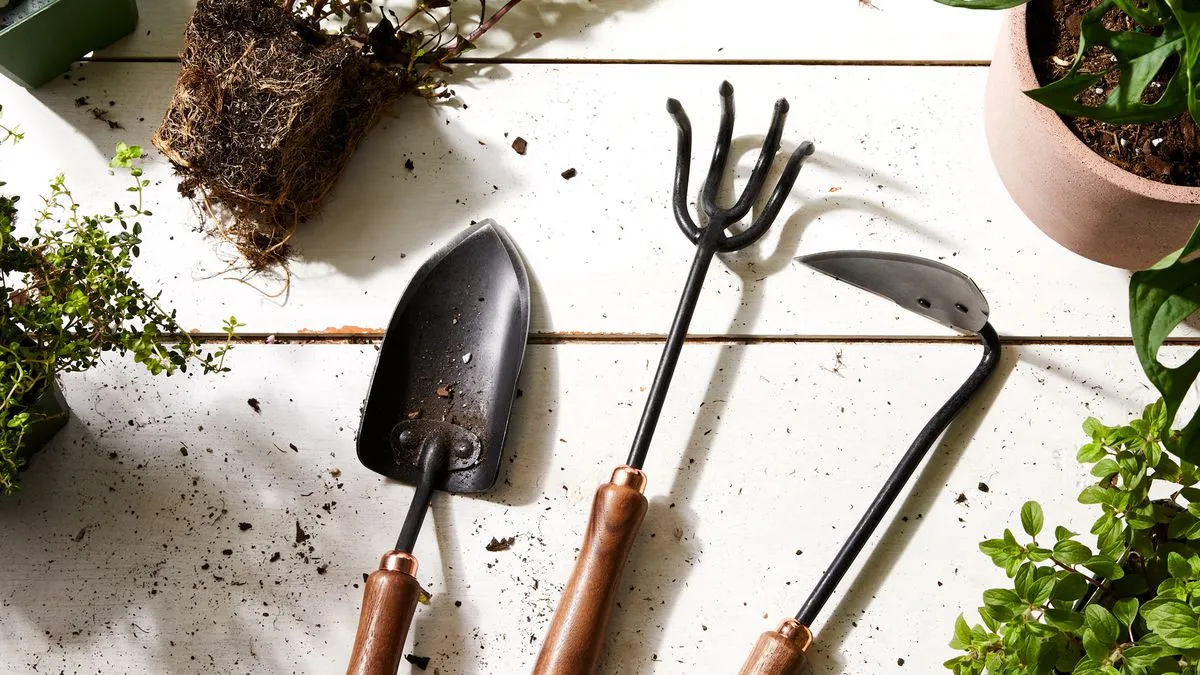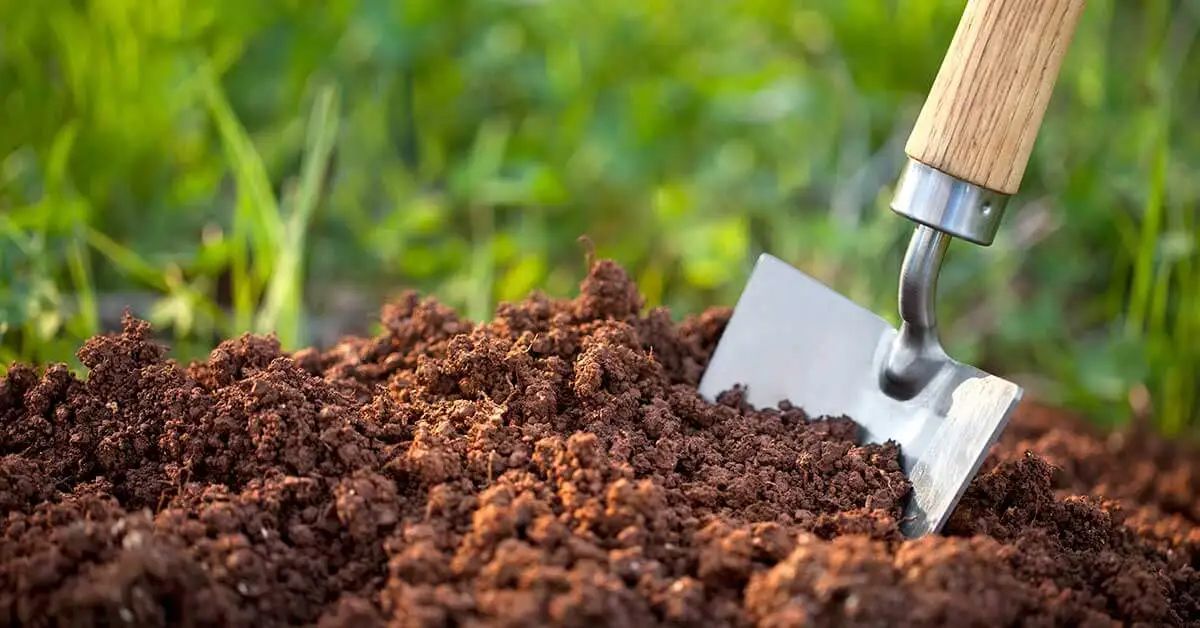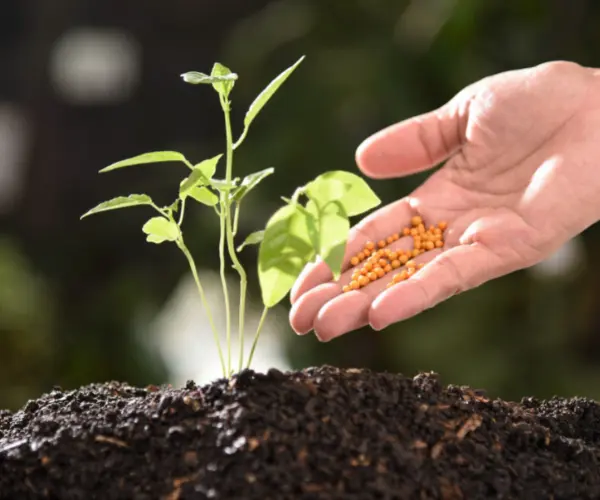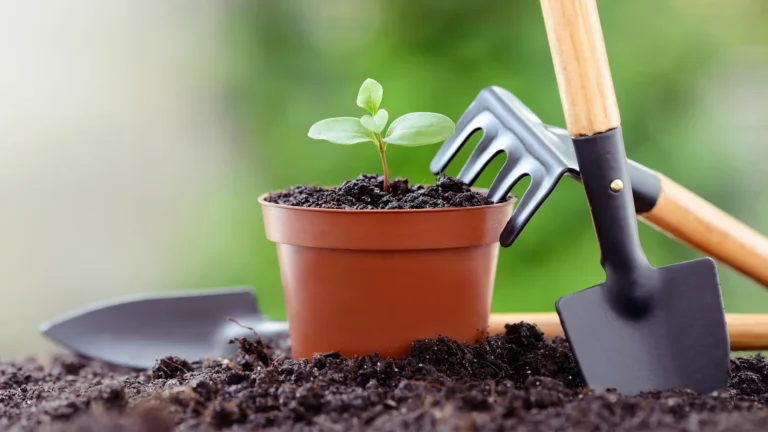Contents
Introduction
When it comes to nurturing an indoor garden, one of the most important factors for thriving plants is the right fertilizer. But if you’re new to indoor gardening, you might wonder, “Why is fertilizer so crucial, and how do I use it effectively?” Let’s break it down in simple terms.
Fertilizers are like vitamins for your plants. They provide essential nutrients that soil alone might not have enough of. Think of it as giving your plants a well-rounded diet to help them grow strong and healthy. Indoor gardens, in particular, need a bit of extra help because they’re not exposed to the natural nutrients found outdoors. Without the right nutrients, your plants can struggle, leading to poor growth and lackluster blooms.
Now, there are different types of fertilizers you can use. You’ve got liquid fertilizers, which dissolve in water and are easy to apply directly to your plants. Then there are granular fertilizers, which are solid and need to be mixed into the soil. Each type has its own benefits and best-use scenarios, so it’s good to understand what fits your gardening style and needs.
But having the right fertilizer is just part of the equation. To make sure your plants get exactly what they need, you also need the right tools. From measuring spoons to mixing containers, the right accessories can make a huge difference. They help you apply fertilizers correctly and avoid mistakes that could harm your plants.
Essential Fertilizer Tools
When it comes to making your indoor garden thrive, having the right tools is just as important as choosing the right fertilizer. Imagine trying to cook a meal without measuring spoons or a mixing bowl—it would be pretty tricky, right? The same goes for gardening. With the right tools, you can apply fertilizers more accurately and make sure your plants get the nutrients they need without any fuss. Let’s dive into some of the essential tools that can make your gardening tasks a breeze.

Measuring Tools
First up are measuring tools. Just like you wouldn’t guess how much flour to put in a recipe, you shouldn’t guess how much fertilizer to use. Too little and your plants might not get enough nutrients; too much and you could harm them.
- Measuring Spoons and Cups: These are your go-to for precise amounts of liquid or granular fertilizer. They come in handy when you need to mix your fertilizer with water or measure out small quantities for individual plants. This ensures you’re giving each plant the right amount without overdoing it.
- Scales: For larger quantities of granular fertilizers, a scale is your best friend. Digital or analog, a good scale helps you measure out the exact amount needed, which is especially useful if you’re handling a big indoor garden. It’s all about making sure you’re not just winging it but using the right amount for the best results.
Mixing and Application Tools
Next, let’s talk about mixing and application tools. Once you’ve measured your fertilizer, you need to get it ready for your plants.
- Mixing Containers: These containers are perfect for combining your fertilizer with water. They help prevent clumps and ensure that your solution is evenly mixed, so every drop you apply has the right balance of nutrients.
- Watering Cans with Fertilizer Compartments: If you want to simplify things, look for watering cans that come with built-in fertilizer dispensers. They make it easy to add nutrients to your watering routine without needing extra steps. Just fill it up, and you’re set for both watering and fertilizing in one go.
- Fertilizer Injector Systems: For those who like to go high-tech, fertilizer injector systems work with your irrigation setup to mix and deliver nutrients automatically. This is perfect if you’re using an automated watering system and want to streamline your fertilizing process.
Application Tools
Finally, let’s cover some tools that help you apply your fertilizer just right.
- Fertilizer Spreaders: These come in manual or electric versions and are great for spreading granular fertilizers evenly across your garden. They save you time and ensure that every part of your garden gets a uniform amount of nutrients.
- Pipettes and Syringes: When it comes to precise application, especially for delicate plants or specific areas, pipettes and syringes are invaluable. They allow you to apply liquid fertilizers with pinpoint accuracy, making sure you’re targeting exactly where it’s needed.
Accessories to Enhance Fertilizer Application
Now that you’ve got your essential tools, let’s talk about some accessories that can take your indoor gardening game to the next level. These accessories aren’t just extras; they play a crucial role in making sure your plants get the best possible care. Think of them as the little helpers that fine-tune your gardening process, ensuring your plants are getting the right nutrients in the right way.

pH and Nutrient Meters
Understanding what’s going on in your soil or nutrient solution is key to successful indoor gardening. That’s where pH and nutrient meters come into play.
- pH Meters: Just like your body needs a balanced pH level to stay healthy, your plants do too. A pH meter helps you measure the acidity or alkalinity of your soil or nutrient solution. Plants generally have a preferred pH range where they can absorb nutrients most effectively. With a pH meter, you can keep your soil or solution within that ideal range, making sure your plants aren’t missing out on vital nutrients.
- Nutrient Meters: These meters measure how much of each nutrient is present in your soil or nutrient solution. They’re incredibly useful for making sure your plants are getting the right balance of nutrients like nitrogen, phosphorus, and potassium. If a nutrient is lacking or too abundant, you can adjust your fertilizer regimen accordingly to keep your plants healthy and happy.
Fertilizer Storage Solutions
Proper storage of your fertilizers can make a big difference in their effectiveness and longevity. Here’s how you can keep your fertilizers in top shape:
- Airtight Containers: Fertilizers can lose their potency if exposed to moisture or air. Airtight containers help keep them fresh and effective by protecting them from environmental factors. Whether you’re storing granular or liquid fertilizers, these containers ensure that your products stay in good condition until you’re ready to use them.
- Labeling Systems: When you have different types of fertilizers, it’s easy to get confused about which one to use for which plant. Labeling systems help you keep track of what you have and make it simple to grab the right fertilizer when you need it. Clear labels or markers can prevent mistakes and ensure you’re applying the correct product to each plant.
Best Practices for Using Fertilizers in Indoor Gardens
Using fertilizers effectively isn’t just about having the right products and tools—it’s also about applying them in the best way to get the most out of them. Here’s a straightforward guide to help you master the art of fertilizing your indoor garden and keep your plants in top shape.

Understanding Plant Nutritional Needs
Just like people have different dietary needs, plants have specific nutritional requirements. Knowing what your plants need can make a huge difference in their growth and health.
- Tailoring Fertilizer Use: Different plants need different nutrients. For example, leafy greens might need more nitrogen for lush foliage, while flowering plants often benefit from higher phosphorus levels to promote blooms. Researching the specific needs of your plants will help you choose the right type of fertilizer and apply it correctly. If you’re not sure, there are general-purpose fertilizers that work well for a variety of plants, but it’s always better to match the fertilizer to the plant’s needs if you can.
- Adjusting Fertilizer Types: Depending on whether your plants are in the growth phase or flowering, you might need to switch up the types of fertilizers you use. Liquid fertilizers are great for quick boosts, while slow-release granular fertilizers can provide nutrients over a longer period. Understanding these nuances helps in maintaining balanced nutrition for your plants.
Proper Fertilizer Application Techniques
Applying fertilizers correctly is crucial. Too much or too little can lead to problems, so here’s how to get it right.
- Avoiding Over-Fertilization: More isn’t always better when it comes to fertilizers. Over-fertilizing can lead to nutrient imbalances and damage your plants. Signs of over-fertilization include yellowing leaves, leaf burn, and poor growth. Always follow the recommended dosage on the fertilizer package and start with a lower amount if you’re unsure. It’s better to under-fertilize and adjust gradually rather than risk overdoing it.
- Timing of Fertilizer Applications: Timing can impact how well your plants absorb nutrients. Fertilize during the active growth periods of your plants, which is typically during the spring and summer for most indoor plants. Avoid fertilizing during periods of dormancy or if the plants are stressed. Also, consider the growth stage of your plants—young seedlings need different nutrient ratios compared to mature plants.
Conclusion
We’ve covered a lot about making your indoor garden flourish with the right fertilizers and tools. To wrap things up, let’s recap the key points and why they matter for your gardening success.
Recap of Key Tools and Accessories
Having the right tools and accessories is essential for a thriving indoor garden. From measuring spoons and scales to mixing containers and watering cans with fertilizer compartments, each tool plays a crucial role in applying fertilizers accurately and effectively. Accessories like pH and nutrient meters ensure that your soil or nutrient solution is balanced and provides the necessary nutrients for your plants. And proper storage solutions, like airtight containers and labeling systems, keep your fertilizers in good condition and easy to manage.
Encouragement to Invest in Quality Tools
Investing in quality tools and accessories might seem like an extra expense, but it’s worth it for the health and growth of your indoor garden. Quality tools can make your gardening tasks easier, more accurate, and more enjoyable. They help you avoid common mistakes and ensure that your plants get the best care possible. Think of it as setting yourself up for gardening success by equipping yourself with the best resources available.
Call to Action
Now that you know the ins and outs of fertilizer tools and accessories, it’s time to take action. Assess your current gardening setup and consider if there are any upgrades you could make. Whether it’s adding a new pH meter, investing in a fertilizer injector system, or simply getting better storage solutions, every improvement can lead to healthier plants and a more vibrant indoor garden.



